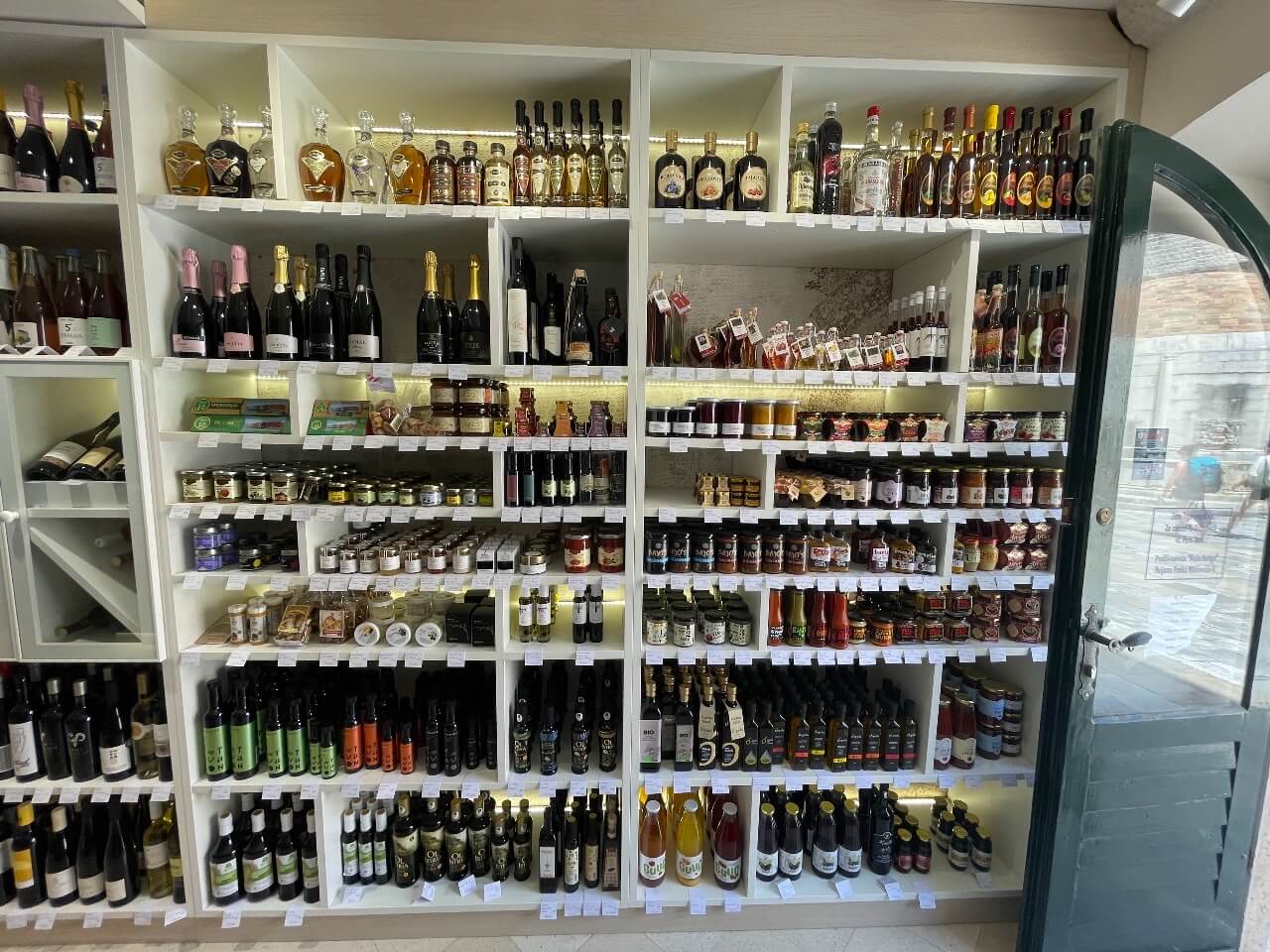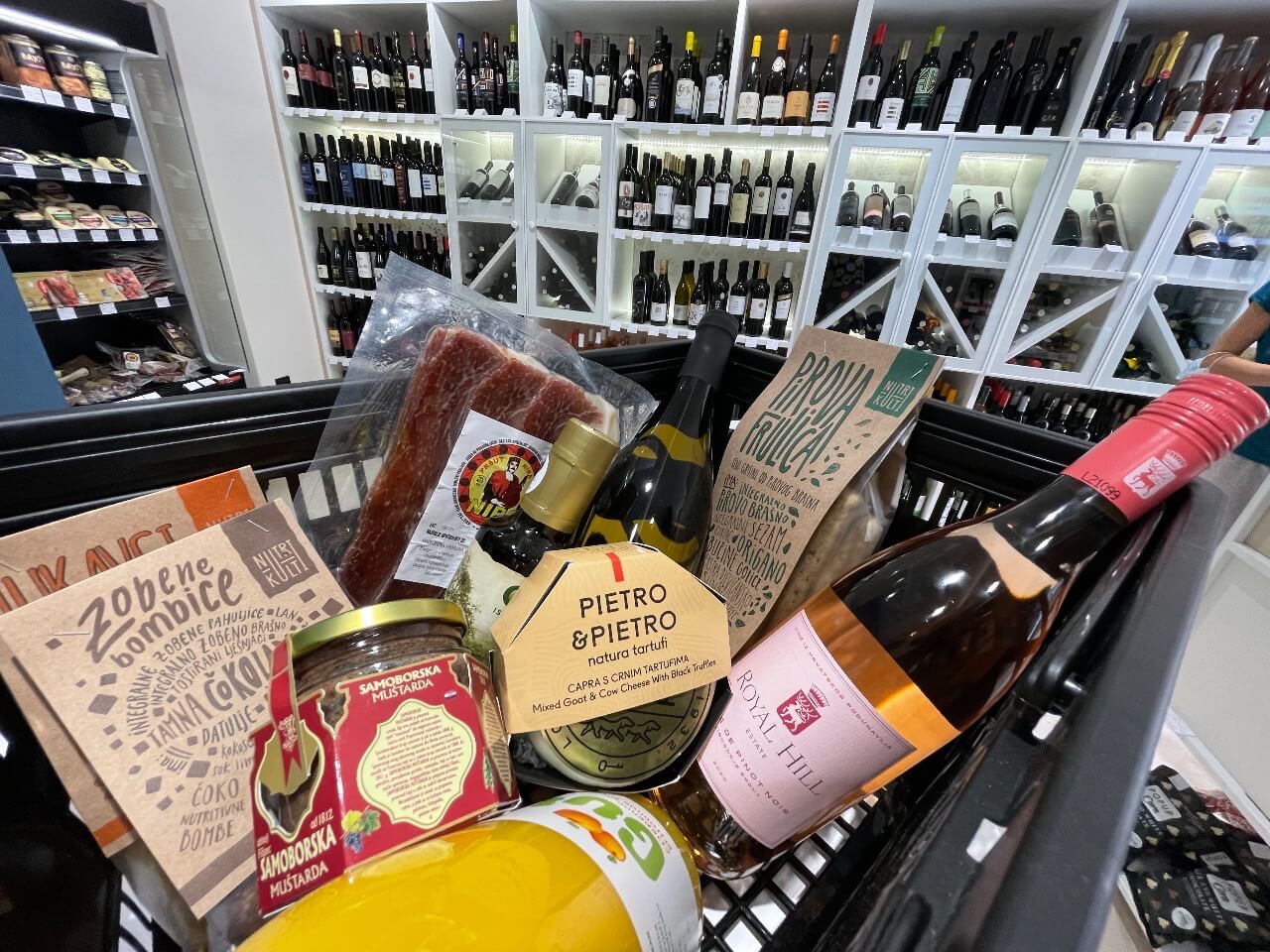Croatia’s Most Spectacular Vineyard: Sea, Stone and Sparkling Wine of Bakar Bay
March 4th, 2022 - For centuries, the steep slopes of Bakar bay have been covered in terraced vineyards built in dry stone. A look into the iconic sparkling wine Bakarska Vodica and the passionate local community that rekindled the tradition and saved the brand from oblivion
There’s a small town in the Northern Adriatic that once used to be three times as big as the capital. In terms of population, that is: at the turn of the 19th century, Bakar was the most populated town in Croatia.
A lot has changed since then, including the landscape of the once idyllic coastal town. In the 1970s, the Bakar bay was transformed into an industrial zone featuring a coke plant and a bulk cargo port, complete with an oil refinery in the nearby Urinj. The plant closed down in the late 90s, but it took a lot longer for the town tainted by decades of pollution to shake off the stigma and focus on brighter things ahead.
 Bakar / TMaras, Creative Commons
Bakar / TMaras, Creative Commons
Looking at the remnants of Bakar’s industrial past lining the bay, you would never think that the area used to be known for prolific wine production. And yet it was, and even though the centuries-long winemaking tradition was briefly interrupted, the area is now regaining its fame thanks to the herculean efforts of the local community.
The story of Bakar wine begins in the 18th century, when Empress Maria Theresa granted Bakar the status of a free town complete with all related privileges. The empress encouraged the wine trade, going so far as to exempt those who cultivated the land for the purpose of grape growing from paying taxes for a period of five years.
The local populace jumped on the opportunity and the steep Bakar coastline soon turned into one big vineyard, but the specific traits of this geographic area meant that people had to get creative.
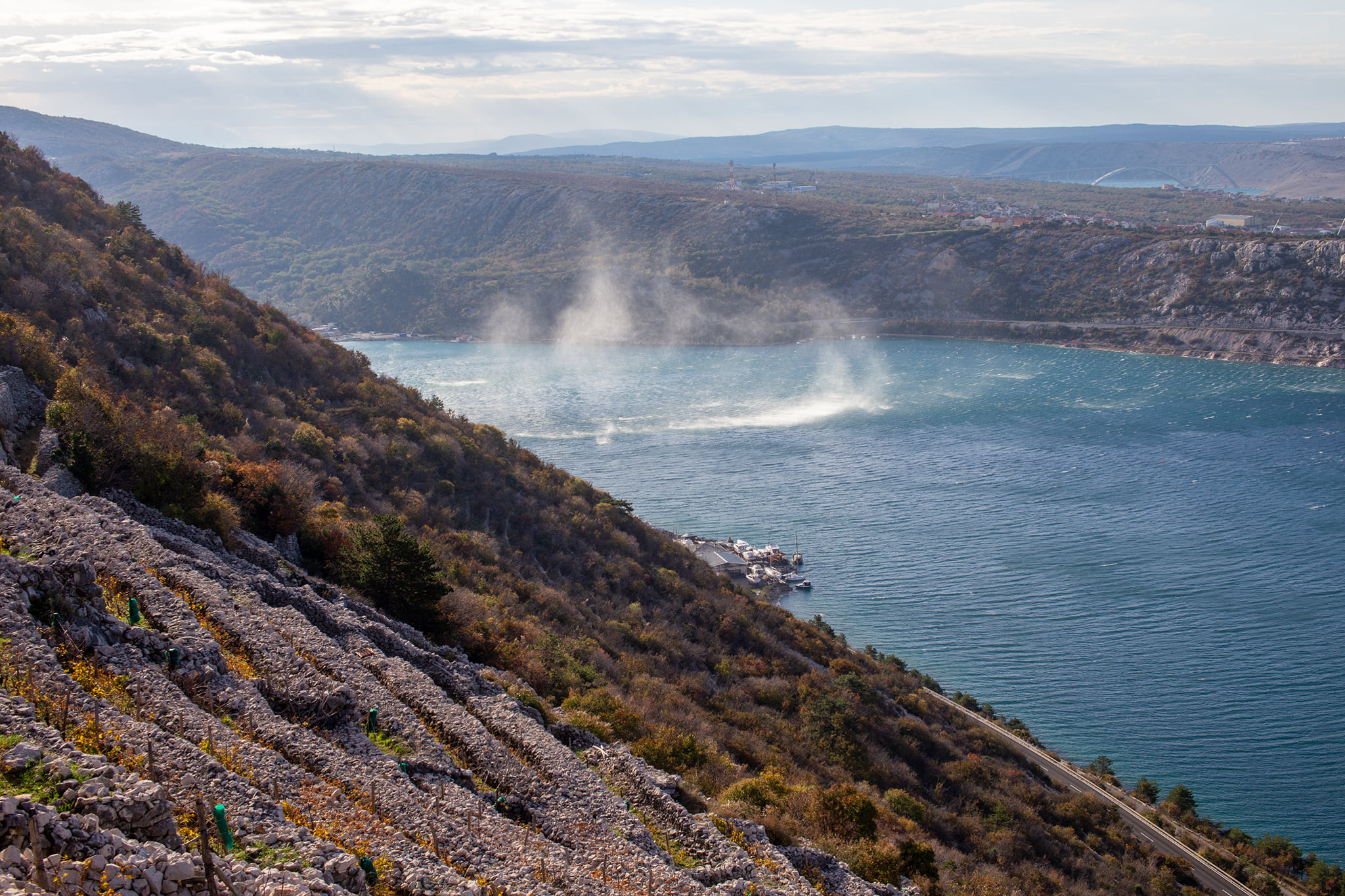 Praputnjak - kulturni krajolik Facebook
Praputnjak - kulturni krajolik Facebook
First of all, there’s bura. The mighty wind wreaks havoc in this part of the Adriatic to such a degree that it inspired a saying: bura is born in Senj, gets married in Bakar, and goes to Trieste to die. With a good part of the Bakar coastline fully exposed and facing the open sea, something had to be done to shield the grapevines from the wind’s destructive force.
There’s also the rugged karst terrain, not exactly the most favourable environment in terms of agriculture. The barren slopes had to be painstakingly cleared of stone and what little vegetation there was, followed by enrichment of the land with fertile soil brought over from the hinterland.
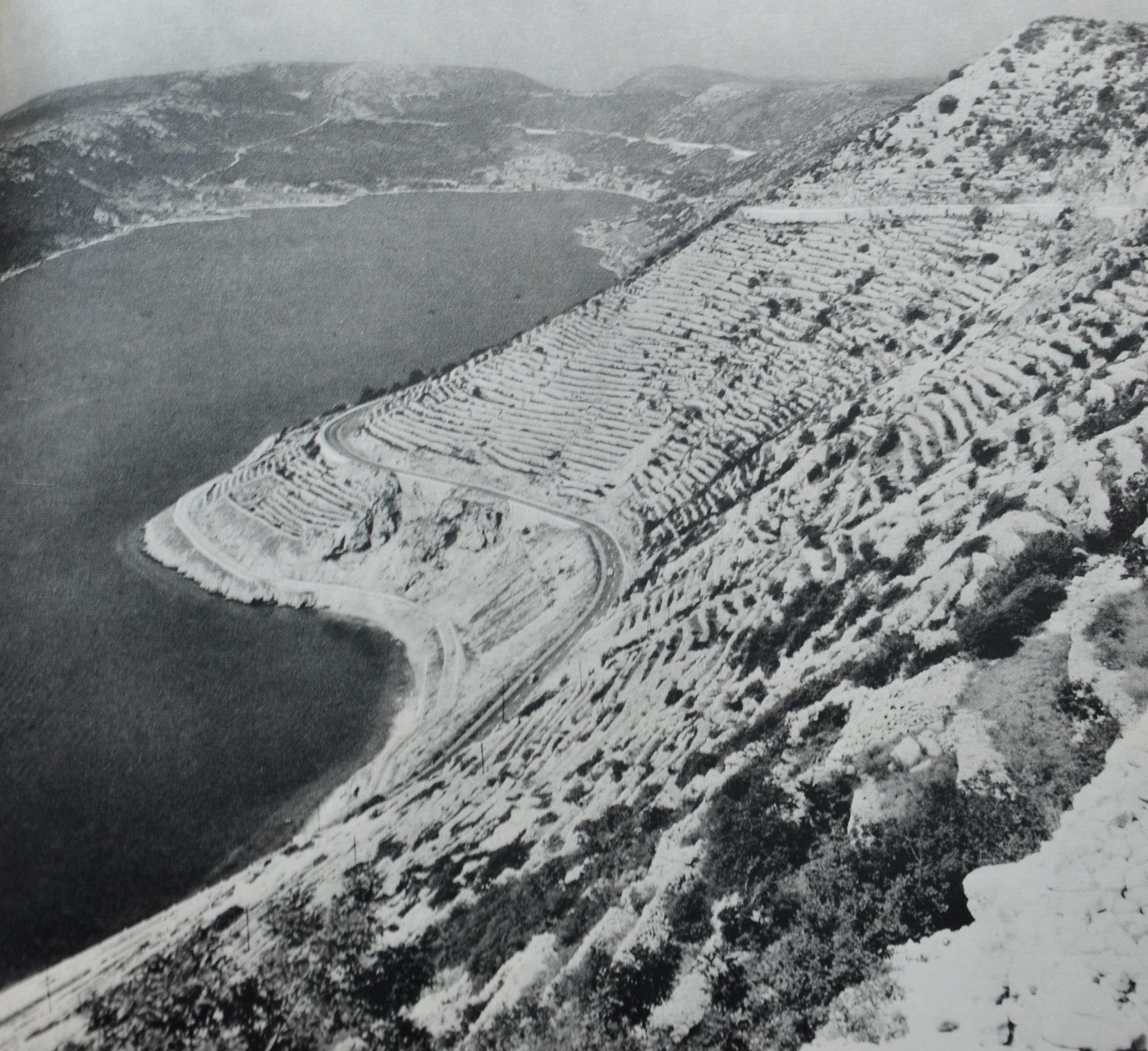
To ensure all of this stayed in place, the local population built dry stone walls, creating vast terraced vineyards that are known in Croatian as Bakarski prezidi. And while dry stone walling is a staple of traditional building in Croatia, rarely is it found in such a unique form: steep slopes criss-crossed with walls, running almost all the way down to the sea.
Given the challenging terrain, it took eight hours of work for one person to build 1,5 cubic metres of dry stone wall. Soil had to be brought over from the mountainous hinterland, either on foot or on carts, prolonging the construction process.
And yet, by the end of the 18th century, dry stone terraces covered 42 hectares of land on the Bakar coastline, entirely cultivated with grapevines. As seen from above, minus the grapes:
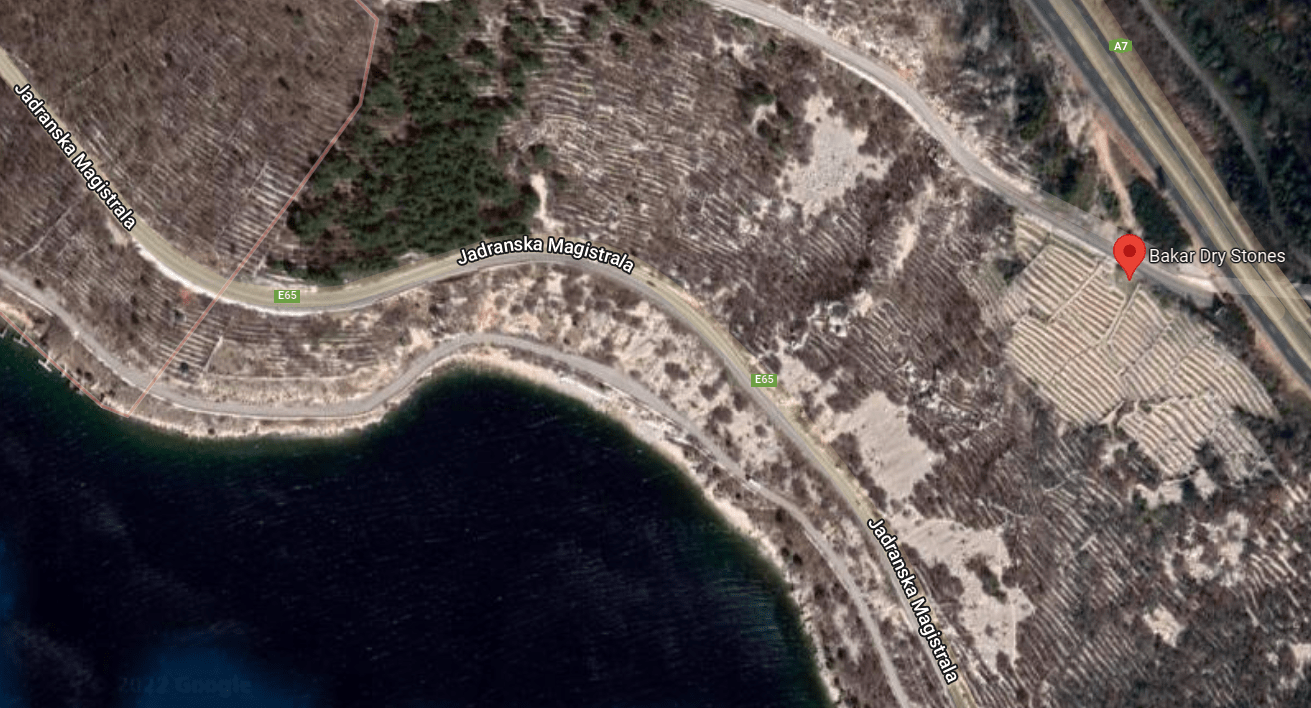 The dry stone walls of Bakar, with the most recently restored area seen on the right
The dry stone walls of Bakar, with the most recently restored area seen on the right
The local population, mostly that of the nearby village Praputnjak, grew the belina grape variety used to produce a renowned sparkling wine named Bakarska Vodica (Bakar Water).
It’s speculated that the methods of sparkling wine production were introduced in this region by French soldiers during the Napoleonic era, or perhaps by Bakar shipowners who at the time did business with France. Either way, it didn’t take long for winemaking to become one of the main sources of livelihood in the area. All the families in the region took part in the grape harvest, and the tricks of the trade were taught to children from an early age.
With most men employed at the local shipyards or out at sea for a good part of the year, women took on a lion’s share of the work and were proficient in every part of the wine trade, from cultivation to winemaking. Men typically took on the more physically strenuous tasks such as the construction and maintenance of the dry stone walls.
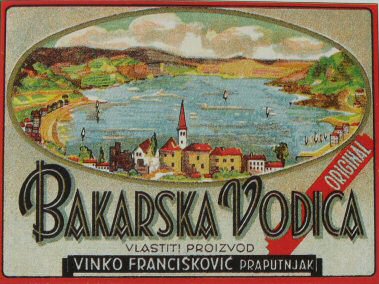 A vintage label design for Bakarska Vodica / Public domain
A vintage label design for Bakarska Vodica / Public domain
For centuries, Bakarska Vodica was produced in the Bakar region using the ancient method known as méthode rurale, which involves bottling the still-fermenting young wine so it would produce CO2 in the bottle without the need for a second fermentation process. It was made of indigenous white grape varieties, belina for the most part, as well as žumić, vrbić, verdić, žlahtina, gustošljen, brankovac and white muscat.
Bakarska vodica was historically held in high regard and was seen as a brand of the region. A wine law passed in 1930 reads:
The name Bakarska Vodica can only be used for natural sparkling wine produced in Bakar and its environs from grapes grown in the area and using the traditional method.
And:
Bakarska Vodica is a natural sparkling wine from the Croatian Littoral. The fermenting young wine (mošt) is bottled and stored in a cold environment.
Speaking of branding, the Bakar wine was talked about as early as 1910, with a state decree saying:
The name 'sparkling wine' is to be featured on bottle labels, printed in large and easily legible letters that draw attention. The label is to be affixed in such a way that it can only be removed from the bottle by being soaked in water.
Bakarska Vodica was not to be messed with. And so it went on until WWII, when production came to a halt for a number of reasons varying from grapevine diseases to legal regulations.
Its real fall from grace began in 1960, when the company Istravino adopted the name Bakarska Vodica for a low-quality sparkling wine made by carbonation and bastardised the poor historic brand. Over time, they reached an output of 2,5 million bottles a year, made possible by low manufacturing costs and partially outsourcing production to Slovenia. The faux Bakarska Vodica is still available on the market, nowadays produced by Mladina in continental Croatia.
This could have been the end of Bakarska Vodica, were it not for a passionate community of Praputnjak locals who decided to roll up their sleeves and reinstate one of the region’s most recognisable brands. In 2000, the Agricultural Cooperative Dolčina from Praputnjak (Poljoprivredna Zadruga Dolčina) launched an initiative to restore the old vineyards and save the belina variety from extinction.
 Praputnjak - kulturni krajolik Facebook
Praputnjak - kulturni krajolik Facebook
It made perfect sense to start at Takala, a location east of Bakar that the Ministry of Culture declared a protected cultural landscape (ethno zone) in 1972. Takala was historically cultivated by the people of Praputnjak, and the land plots are owned by the locals to this day. In the local dialect, the name Takala means ‘poured downhill’ - very appropriate in this context.
By 2002, eight dry stone terraces were restored, the land cleared after decades of neglect, and the first 280 belina seedlings ceremoniously planted before a delighted crowd. Little by little, the vineyard grew in size, soon yielding a large enough harvest for the famous bubbly to be reintroduced under the name of Stara Bakarska Vodica (Old Bakar Water).
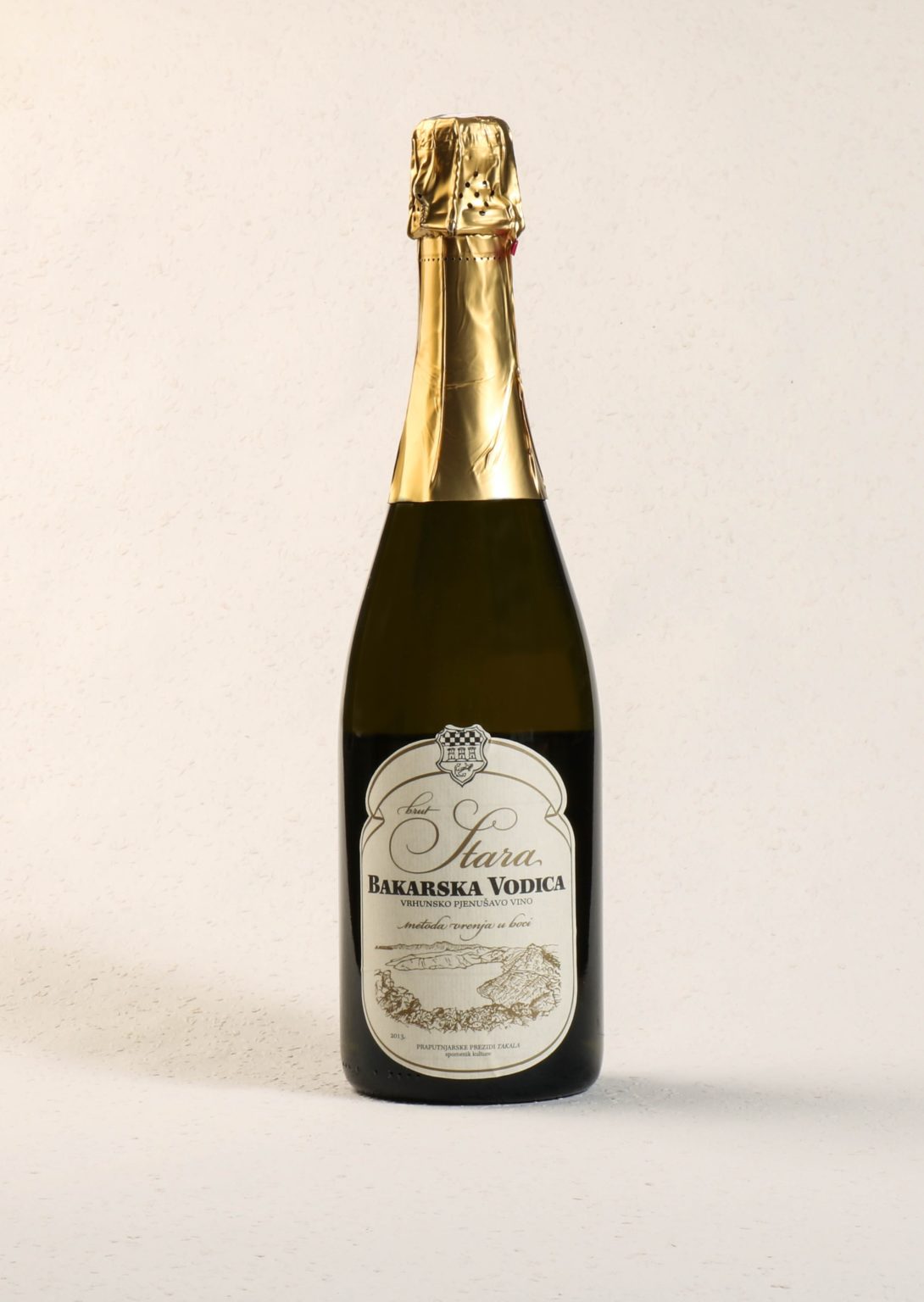 Stara Bakarska Vodica / Kašetica
Stara Bakarska Vodica / Kašetica
Fueled by unrelenting enthusiasm, the project marches on. It was made part of the Rijeka 2020 - European Capital of Culture programme as an initiative entitled Praputnjak - Cultural Landscape.
Together with the Dolčina association and the Dragodid project dedicated to preservation of dry stone masonry, the Praputnjak crew organise wall restoration workshops, with eager volunteers gathering to help rebuild the dry stone terraces. It’s all done by hand, as mechanisation isn’t an option given the specific terrain.
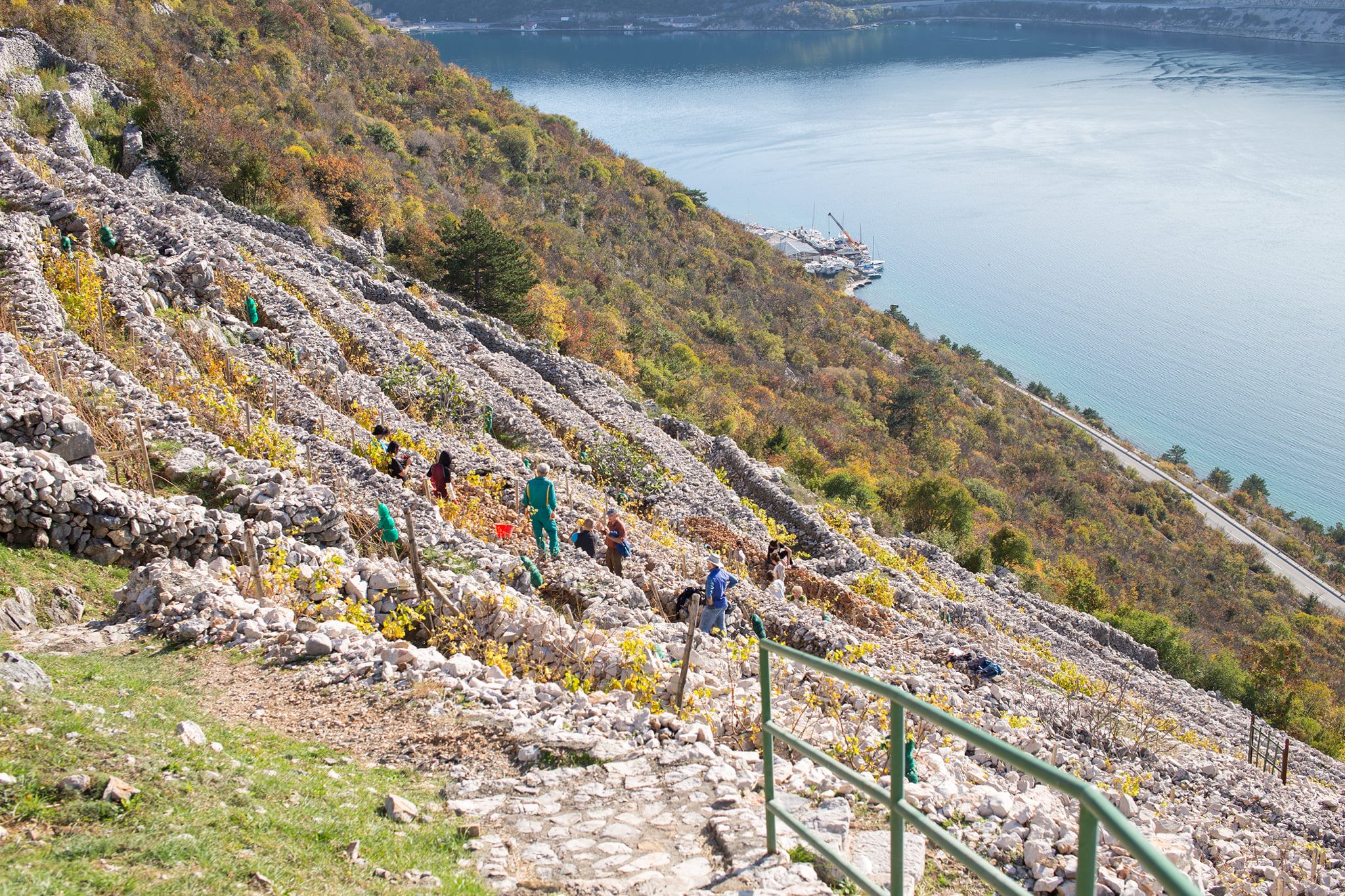 Praputnjak - kulturni krajolik Facebook
Praputnjak - kulturni krajolik Facebook
Nowadays, the Takala vineyard yields some 1,000 bottles of sparkling wine per year. There are no plans for mass production and the wine is not meant to become commercially viable; it’s purely an effort to rekindle the old tradition and save the heritage of the Bakar area.
 Praputnjak - kulturni krajolik Facebook
Praputnjak - kulturni krajolik Facebook
With Bakar eager to shed its industrial image, efforts are being made to restore the charming town to its former glory. There’s been a noticeable shift towards tourism in recent years; significant investments are being made in public infrastructure, the historic Hotel Jadran is reopening later this year as a four-star facility, and tourism professionals are developing new attractive ways to showcase the vibrant heritage of Bakar. The iconic sparkling wine, together with the spectacular stone vineyards, is just the cherry on top.
Quotes featured in the article were translated from a feature on the dry stone walls of Bakar written by Vjekoslav Tićak and published in Sušačka Revija.
Get a Taste of Zagreb County Jastrebarsko on Wine Country Getaway
January 12, 2022 – Celebrated Croatian-American Chef Richard Gruica has a big enthusiasm for local wine and food. This Saturday he'll lead curious gastronauts through a culinary tour of Zagreb County Jastrebarsko on Wine Country Getaway.
These days, it's easier than ever to find great local food in Croatia's capital. But, if you're searching for authentic Zagreb dishes, what you'll actually find is a cuisine of shared provenance.
For the most part, Zagreb food is actually the traditional menu of Zagreb County and Zagorje. These largely rural areas supply the homes, hotels and restaurants of Zagreb with much of their best food and wine.

In villages and towns surrounding Zagreb, traditional skills are used to get the very best from the land. Often, this know how has been passed down over many generations.
Croatian-American chef Richard Gruica has a big enthusiasm for local wine and food. Splitting his time between the US and Zagreb, there's actually nothing better he likes than setting off on a voyage of culinary discovery in Zagreb County. Thankfully, there's lots to explore.
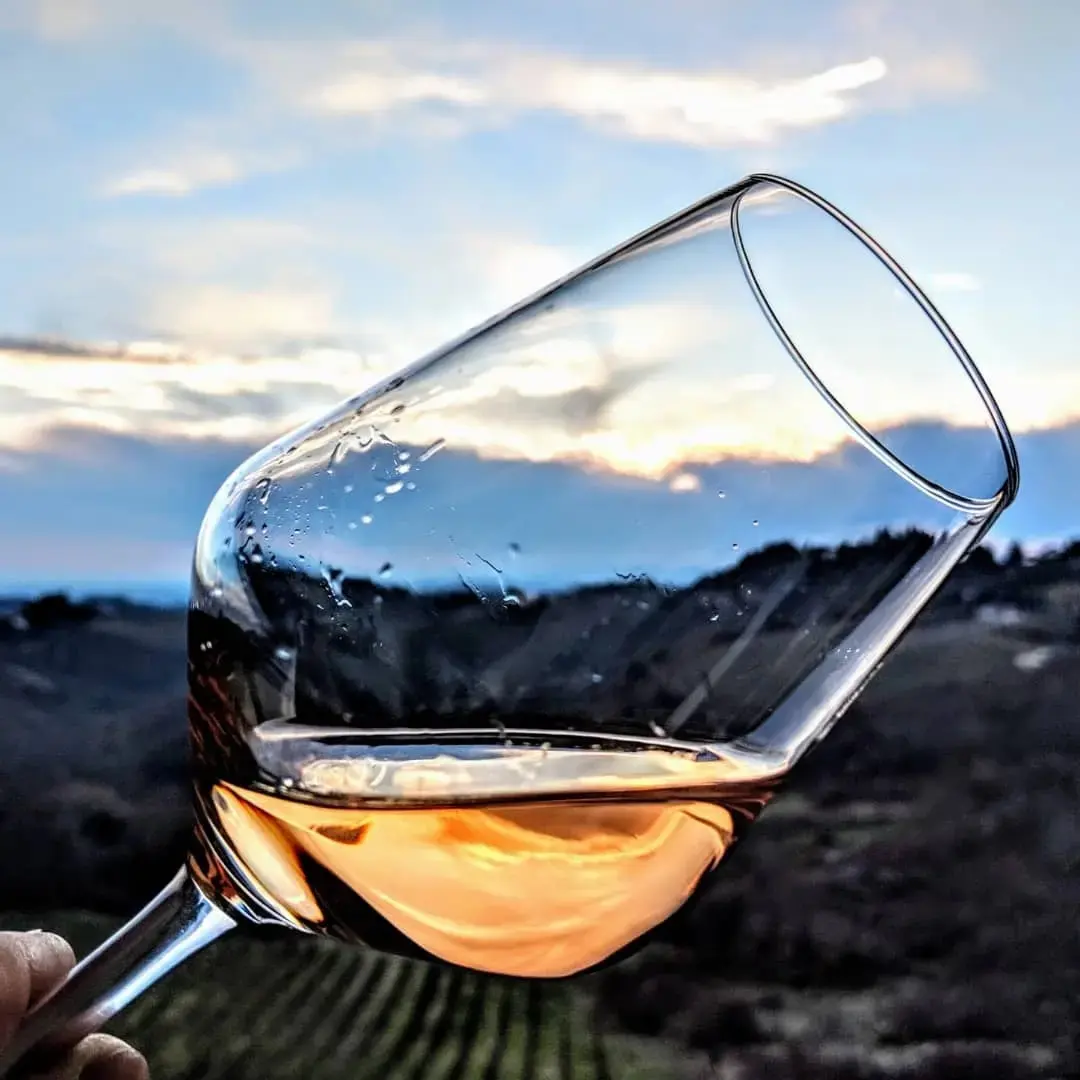
This Saturday, 15th January, Richard is sharing some of the secrets he's found in Zagreb County Jastrebarsko on Wine Country Getaway. He'll take a small group from Zagreb to one of Croatia's premium wine-growing regions. There, you'll try some of the best wines made in continental Croatia, while learning about indigenous grapes and traditional methods. After sampling the wines, you'll be treated to a meal of traditional local food, with wine paired to the dishes.

Richard's Wine Country Getaway will visit Plešivica, Jastrebarsko, the Samobor Hills, and the southern part of the Žumberak mountains. The tour will visit the estate of a renowned local winemaker. You'll also drop in on a traditional copper – he's the only one in this region still making wooden barrels in the traditional way. After taking in the tradition, you'll head into the hills to enjoy a traditional lunch in a rustic wooden hillside tavern. Richard's tour will conclude with a trip into town for a famous dessert.
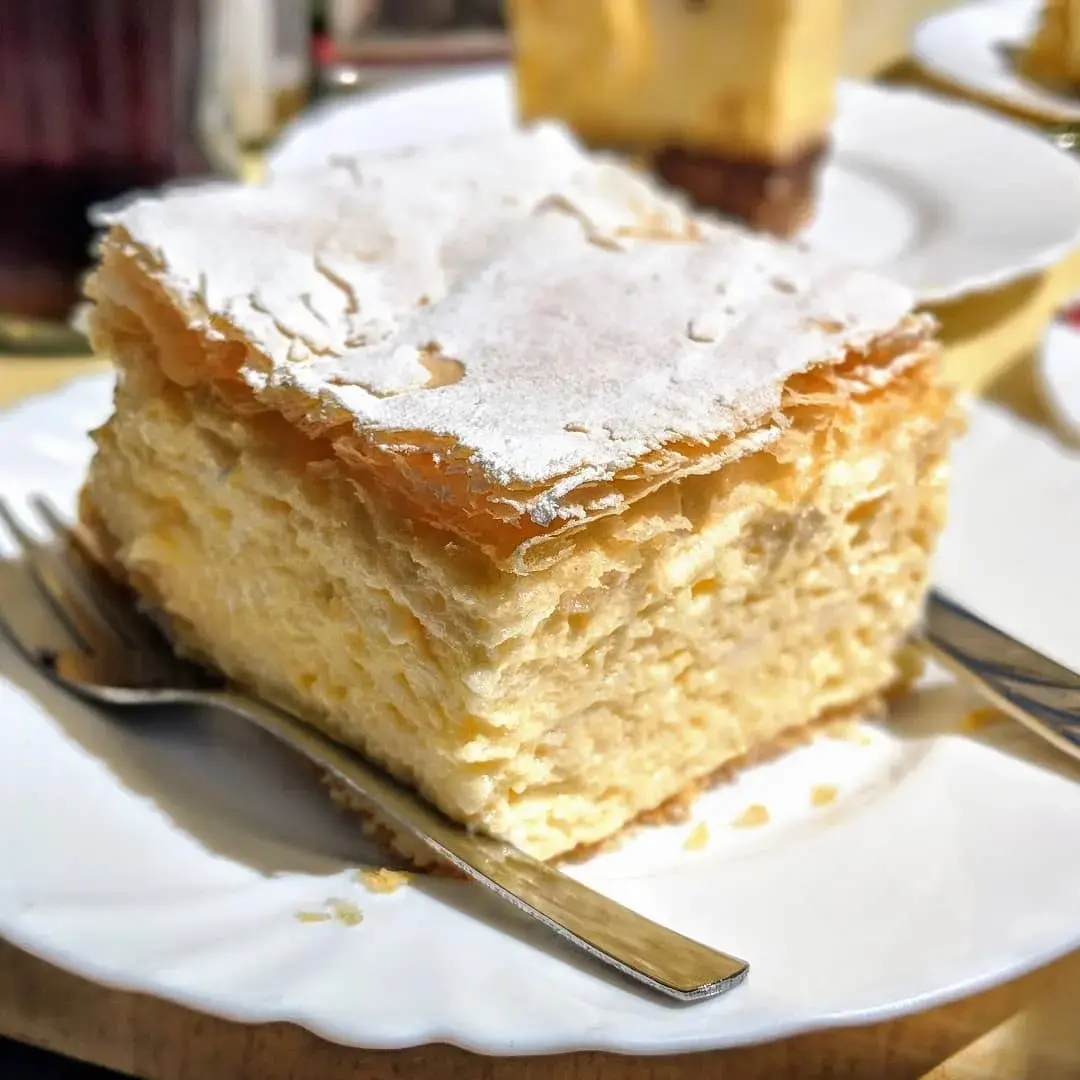
Richard's tour of Zagreb County Jastrebarsko on Wine Country Getaway includes
• Transportation
• Cooperage visit and tour
• Wine tasting and tour
• Gourmet lunch with appetizer, choice of entrée and paired wine
• Dessert
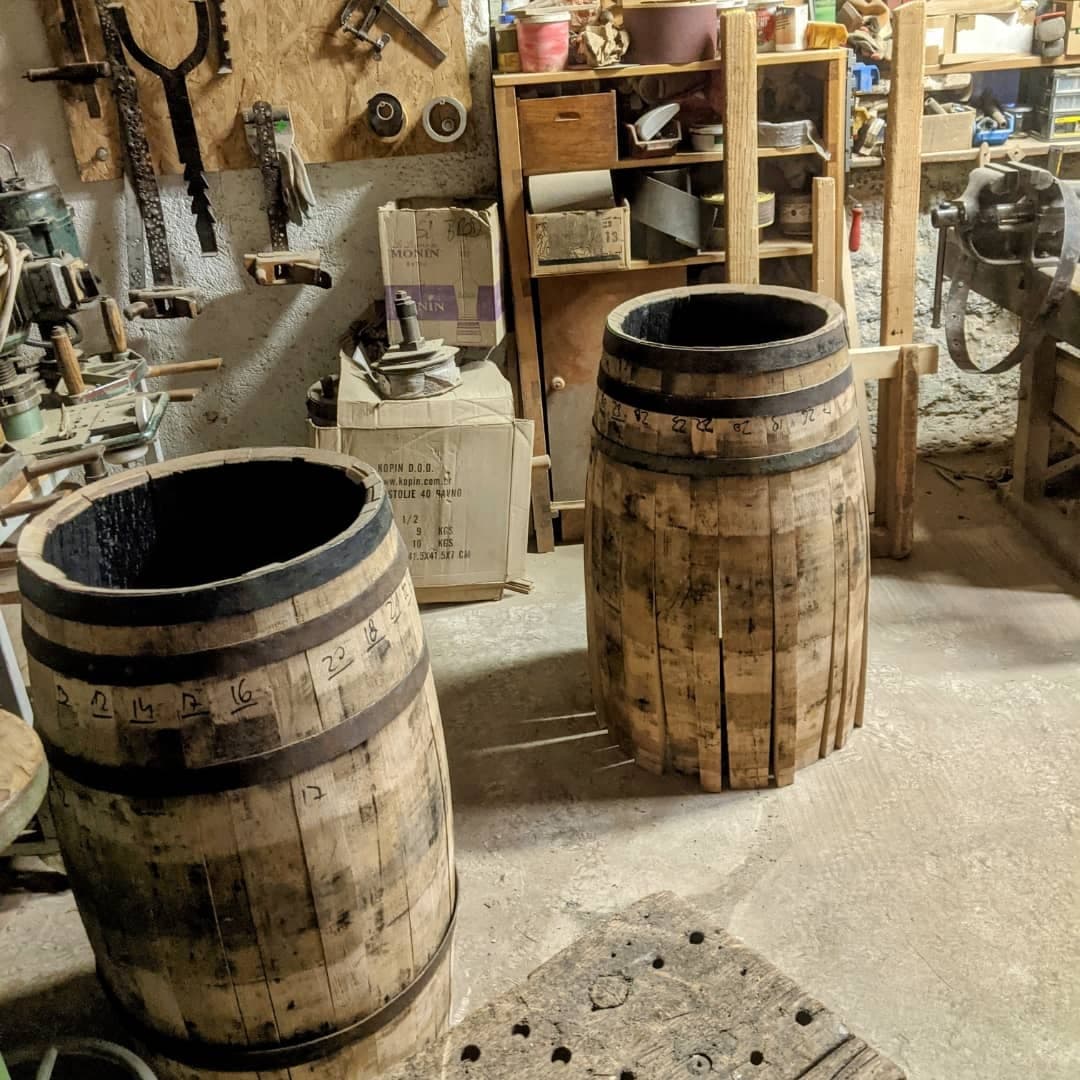
All guests will be picked up in front of Hotel Academia (Ul. Ivana Tkalčića 88) at 11am on Saturday 15th January. You'll return to Zagreb at approximately 7.30pm. The cost for Zagreb County Jastrebarsko on Wine Country Getaway is 500 Kn or 75 USD. You can book your place and get more information here.
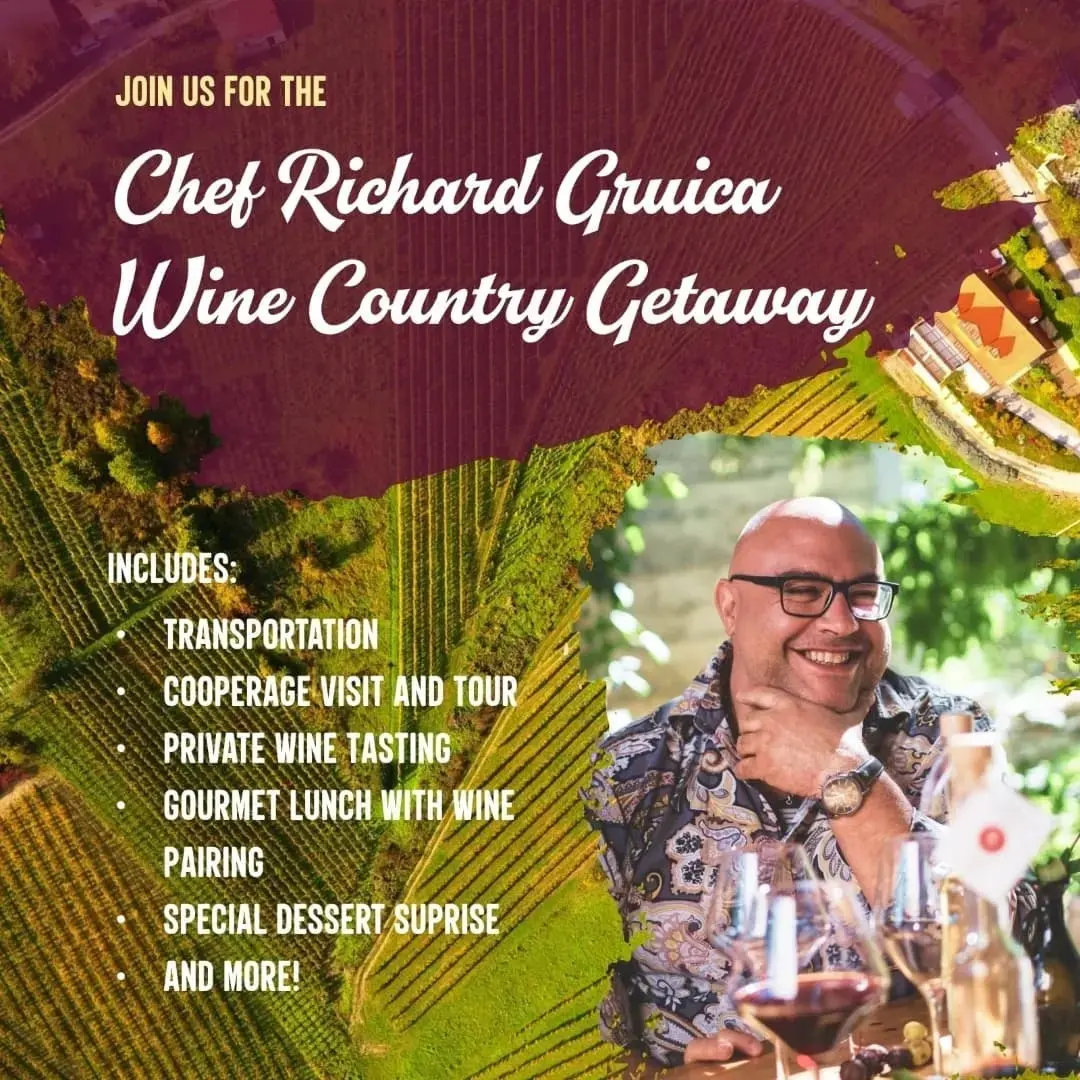
Mala Butiga is Dubrovnik’s New Wine and Food Hotspot
27 August 2021 - Mala Butiga is a brand new shop located in the centre of Dubrovnik's historical district. It is the city's newest and one of the most interesting additions when it comes to wine and food offers.
Across the square from the Great Onofrio's Fountain, Mala Butiga offers an amazing selection of Croatian wine and premium food items. It is a family business and a passion project started out of love for all things local and authentic. It is run by locals with plenty of tourism and hospitality experience that includes running a wine bar and making wines. Mala Butiga aims to be a one-stop shop for foodies and wine enthusiasts alike.

Dubrovnik's historical centre might be brimming with people and activity, but it is hardly a shopper's paradise. There are plenty of options when it comes to stores catering to travellers, but not many offer great quality for a reasonable price. When it comes to local wine and food, the quality of which is one of the major draws for people visiting the area, the situation is not much better. Thankfully, Mala Butiga is here to save the day.
Croatian Wine and Spirits

It is a very easy shop to find when entering the historical centre. As you walk through the inner Pile gate, it sits directly behind the prominent fountain to your right. Inside you will find arguably the best selection of wine in all of the Dubrovnik area. Wines sourced directly from local family wineries fall into a wide range of prices and styles. Some of the best Croatian bottles are on display. In a country where almost all the wine is produced on small scale, it took a long time to create this impressive collection. Knowledgeable staff is on hand to help you find that perfect bottle to take home as a memento of Croatia or to enjoy while on holiday with friends or that special someone. Wines from all four major regions of the country are on display, everything from light sparkling wines to full-bodied reds. You can find other spirits at the shop as well with a smaller, but a great selection of craft beer and a lovely offer of Croatian liqueurs waiting for you.
Local Delicacies Not to Miss
When it comes to food items, the deliciousness within is hard to put into words. Truffle specialties from Istria, prosciutto from various Dalmatian regions, top Croatian olive oil, cheese, cured meats, and hot sauces… all this is just a quick visit away. Mala Butiga is stocked perfectly for those last-minute shopping runs before having to entertain a group of friends at home. It is also perfect for creating instant romantic dinners or stocking up for a nice picnic in the local area. Putting together a quick picnic basket was never easier, nor more delicious. In fact, that just might be the perfect choice for a day out while in Dubrovnik. The store holds some items impossible to find elsewhere in Dubrovnik, so its popularity is bound to rise not just with international travellers, but the locals as well.
Mala Butiga is on a fast track towards becoming one of Dubrovnik’s favourite stores. Make sure you pay it a visit before filling up that free space in your luggage for the return flight and we promise you will not be sorry.
For more on lifestyle in Croatia, follow TCN's dedicated page.
For more in-depth information on Dubrovnik, check out our Dubrovnik in a Page section of Total Croatia
First Croatian Wine Camp Open in Medimurje!
May 9, 2021 - Hažić Wine Camp, opened in Jurovčak in the Sveti Međimurje municipality Martin na Muri, is the first Croatian wine camp of its kind.
The camp on the Hažić family farm offers 12 pitches for campers and eight wooden mobile homes available in early July. It is built to the highest environmental standards along with a category of four suns.
"We have invested a lot of effort and energy in our wine camp. I am happy that we succeeded. Although still until at the end of June we have to set up mobile homes. The first campers have already arrived”, said the owner Tatjana Hažić, who has been running this farm with her sister Valentina for many years.
The camp's construction, worth 3,500,000 kunas, was helped by the Rural Development Fund with 1.5 million. OPG Hažić is an excellent example of a successful withdrawal of funds from EU funds because, since 2015, they have applied for six projects with a total value of over five million kunas.
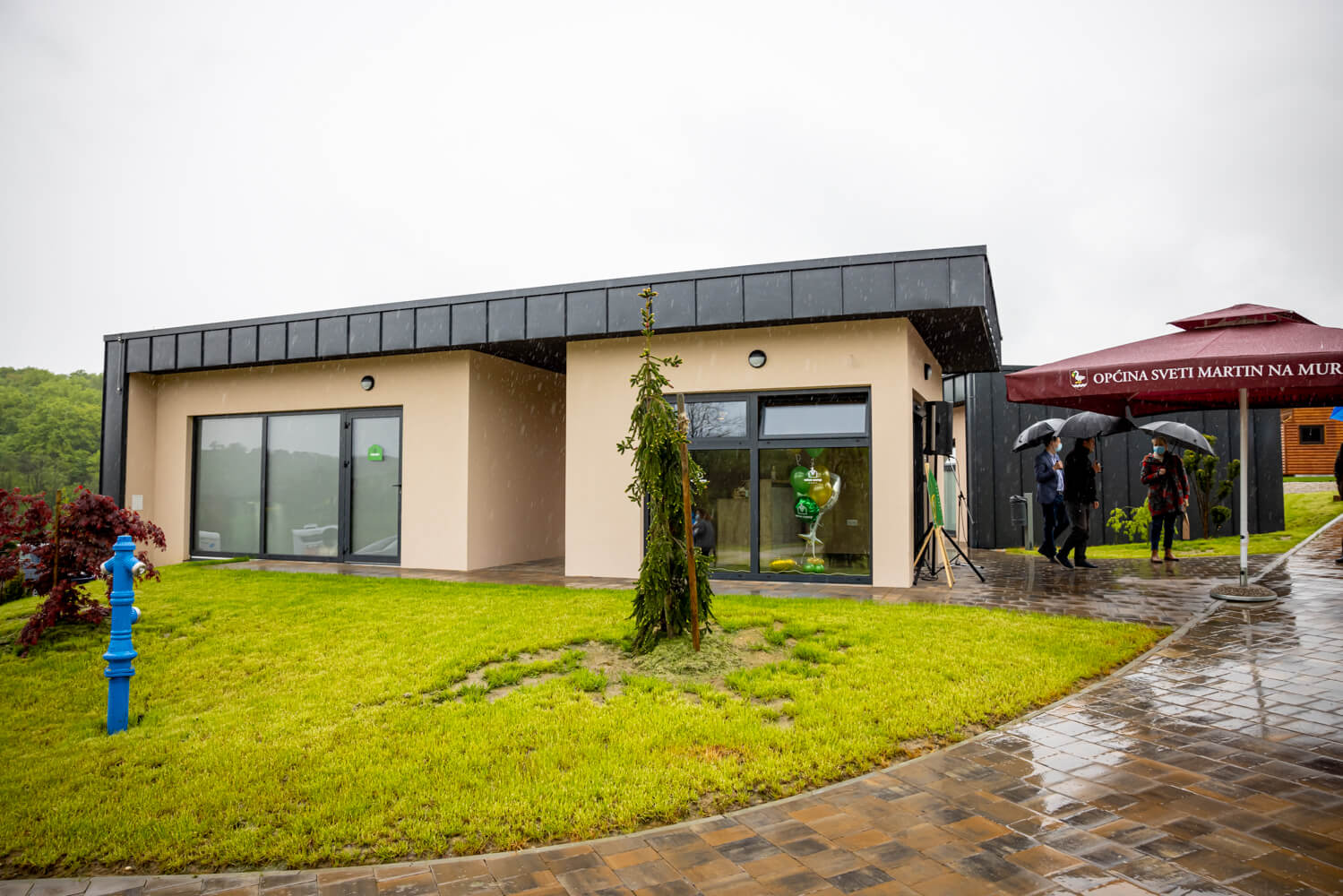
The camp will offer accommodation to tourists who want to enjoy nature, fine wines, sparkling wines, juices, and other apple products of the Hažić family and the rich tourist offer of Međimurje.
Campers in the area can enjoy cycling, wellness services at Terme Sveti Martin, getting to know local cultural sights, enjoying numerous adventurous activities is organized by the Accredo Center, or on a picnic with excellent local food and drinks from the restaurant Međimurski dvori.
The Hažić family represents a very successful tourist story of rural Croatia, which through the countryside tourism provides the best of Međimurje. EU funds have certainly helped them in their development funds. Still, the immeasurable contribution of this whole valuable family must not be overlooked either own funds invested in improving the quality of own products and tourist offer" emphasized Aleksandra Kuratko Pani, head of the Croatian Rural Tourism Association, of which she is a member of the family farm Hažić since 2020.
Guests and tourists of the camp can also enjoy local products from Međimurski štancun.
If you'd like to find out more about Međimurje, click HERE.
For more, follow our travel section.
Zadar Wine Festival 2021 to be Held in Famous 16th-Century Arsenal
March 24, 2021 - Zadar Wine Festival 2021 gathers winemakers, caterers, hoteliers, and wine lovers across Croatia.
The city of Zadar, the Zadar hinterland, and nearby islands have created a significant market for discovering the best wines in Croatia and around the world. The Zadar Wine Festival provides you with an excellent opportunity to present wines, find your new favorite, and make new connections.
The festival aims to achieve successful business cooperation while enjoying the best wines and for exhibitors and visitors to understand why the Zadar Wine Festival is increasing its popularity.
The festival will be held on Friday, April 23rd and Saturday, April 24th in Zadar's Arsenal, a unique zero-category monument built in the 16th century. The multipurpose space has been described as an "indoor town square" due to its size. Its unique mix of tradition, culture, and modern design makes it the perfect location for a first-class experience such as the famous Zadar Wine Festival.
With its unique location, next to the Zadar city walls and the Muraj promenade, visitors and exhibitors get to enjoy a unique experience and witness the beauty of Zadar and its most famous attractions the Sea Organ and Greeting to the Sun.
Zadar Wine Festival 2021 is supported by the City of Zadar, Zadar County, the Tourist Board, the Croatian Chamber of Crafts, the Croatian Chamber of Commerce, the Croatian Sommelier Club, the Association of Winemakers, and others. Whether you're going for the experience, finding your new favourite wine, or making business connections, there is something for everyone to enjoy at the Zadar Wine Festival.
You can check out the two-day program on their website, grab a ticket and enjoy the beauty of Zadar while sipping on Croatia's best wines.
For more about lifestyle in Croatia, follow TCN's dedicated page.
One Minute Ludbreg: Branko Kezman, Award-Winning President of Trsek Wine Association
October 1, 2020 - Continuing our tour of Croatia's miracle town in the TCN One Minute Ludbreg series, a visit to the Kezman winery and President of the Trsek Wine Association, Branko Kezman.
One of the joys of exploring the wineries of Croatia is that - in addition to the wines - you have the chance to share and experience the private dreams of individual winemakers. There are so many different approaches to wine making and wine presentation, even within the producers of the Ludbreg wine road. And if you are looking for a taste of authentic rustic living, then look no further than Branko Kezman in the pretty village of Slanje, a short drive to the west of Ludbreg.
The Kezman family winery was founded back in 1995, and today it produces 10 - 12,000 bottles a year. As with the rest of the region, the focus is very much on white wines, and there is an impressive selection to choose from - graševina, rajnski rizling, bijeli pinot, sivi pinot, silvanac zeleni, manzzoni, muškat and chardonnay. The winery has enjoyed considerable success with numerous awards in regional and national competitions.
The Kezman tasting takes place in a quaint traditional wooden house built by owner Branko Kezman. It is a divine spot and is available for overnight rent. If you are looking for a peaceful escape in traditional Zagorje nature, especially after an excellent wine tasting, this is pretty hard to beat. The house is directly opposite the winery.
Not content to just produce his own wines, Branko Kezman is also the President of Trsek, the Ludbreg Wine Association, which was formed back in 2010 with the aim of promoting the Ludbreg wine story. Among his most important duties is organising and presiding over the annual Young Wines Exhibition in Ludbreg. Now in its 30th year, the event is the largest international exhibition of young wines in Croatia today.
Learn more about Branko Keman and his winery in the latest episode of our One Minute Ludbreg series, below, then check out the other videos in the series.
The One Minute Ludbreg video series is a project in paid partnership with the Ludbreg Tourist Board.
To learn more about Ludbreg beyond its stereotype as the centre of the world, read Marc Rowlands' Ludbreg, the Croatian Road Less Travelled.
For the latest travel info, bookmark our main travel info article, which is updated daily.
Read the Croatian Travel Update in your language - now available in 24 languages
Join the Total Croatia Travel INFO Viber community.
One Minute Ludbreg: Marko Makar, Young Wines Overlooking Timeless Hills
September 21, 2020 - Continuing our tour of Croatia's miracle town in the TCN One Minute Ludbreg series, a visit to the Marko Makar winery for strawberries and sparkling wine overlooking the rolling hills towards Hungary.
In addition to the unique flavours of its reported 130 indigenous wine varieties, one of the key factors which gives the Croatian wine scene such personality is the sheer diversity and determination of its hundreds of private winemakers to realise their own dreams of producing excellent wines according to their vision. With so many different personalities and grape varieties to play with, the results for the wine tourist are spectacular, and one can enjoy several totally different tasting experiences at wineries which are very close to each other.
Such is the case on the Ludbreg Wine Road in Varazdin County, which exists solely due to the passion and dedication of a few private individual winemakers who have come together to promote their wines and the Ludbreg wine region. Among them is Marko Makar, who is quietly expanding his business beyond wine and into tourism.
His winery, located 1.5 km south-east of the town, is a delightful combination of excellent young wines and fabulous views of the rolling hills typical of the region, and the view extends into neighbouring Hungary.
Not content to stop at wine production, Makar is also building a holiday home with swimming pool to add to his offer.
A very relaxed place, and if you come at the right time of year, you can check out his ultimate hedonistic combination, strawberries and his sparking wine, Nika, a blend of Pinot Noir and Chardonnay.
Learn more about Marko Makar and his winery in the latest episode of our One Minute Ludbreg series, below, then check out the other videos in the series.
The One Minute Ludbreg video series is a project in paid partnership with the Ludbreg Tourist Board.
To learn more about Ludbreg beyond its stereotype as the centre of the world, read Marc Rowlands' Ludbreg, the Croatian Road Less Travelled.
For the latest travel info, bookmark our main travel info article, which is updated daily.
Read the Croatian Travel Update in your language - now available in 24 languages
Daily Telegraph Features 1st Master of Wine Making Wine in Croatia
September 20, 2020 - The Daily Telegraph features Master of Wine Jo Ahearne, the first MW to make wine in Croatia. Grapes from Hvar, Hands from London.
One of the most interesting developments in the last few years has been the arrival of the first Master of Wine to produce wine in Croatia from indigenous Croatian varieties.
Jo Ahearne MW took the plunge back in 2014 and moved to Hvar. After years of consulting and buying wines for the likes of Marks and Spencer and Harrod's of London, she had been looking to make her very own wine, and the indigenous grapes of Hvar combined with the relaxed Croatian lifestyle seemed like the perfect opportunity.
I have known Jo since those early days and watched with awe as she has mastered her craft despite the complexities and bureaucracy of starting a wine business in Croatia.
A key early theme has been to use local grape varieties, of which Hvar has several unique sorts. Her debut wine, Rosina, a rosé made from Drnakusa, was met with critical acclaim, and she has been slowly expanding her range from there.
Perhaps her most acclaimed wine is the maceration wine 'Wild Skins', which is a blend of Posip and two Hvar varieties, Kuc and Bogdanusa (which literally translates as 'a gift from God').
I did smile to myself a couple of years ago, as Jo headed off on a wine tasting tour of note. Invitations to exclusive addresses in Tokyo, Kyoto, Melbourne and Sydney - new frontiers for the humble grapes of Hvar, inspired by the vision of a straight-talking Londoner.
After some time making wine on the south side of Hvar, Jo has moved her production to the hilltop village of Vrisnik in central Hvar, from where she runs great wine tastings, which are growing in popularity.
Media attention is also growing in this fascinating relationship between a Master of Wine and the indigenous grapes of Hvar, with today bringing perhaps the biggest exposure yet - a very well-written piece in The Daily Telegraph.
I’m lucky that Jo Ahearne agreed to speak to me during harvest. Winemakers are always hard-pressed when the grapes are being picked, so it’s no surprise that our chat is aborted a couple of times. “It’s all going crazy here as all the whites have decided to come in at the same time. Normally they form an orderly queue,” she messages from the Croatian island of Hvar, a haven of pine trees and lavender fields in the Adriatic, where she has been making wine since 2014. Another day we’re emailing at 4am.
Read the full story in The Daily Telegraph here.
For more information about Ahearne Vino, check out the official Facebook page.
For the latest travel info, bookmark our main travel info article, which is updated daily.
Read the Croatian Travel Update in your language - now available in 24 languages
One Minute Ludbreg: Meet the Ludbreg Wine Road
August 22, 2020 - Although Croatia is a well-known wine-producing region, not every region has its own wine road. Meet one which has, the Ludbreg Wine Road.
It is the land of 130 indigenous grape varieties and the birthplace of the original Zinfandel, whose unique wine offer is attracting more and more international attention.
And yet not every wine-producing region in Croatia has its own wine road. Dalmatia, arguably the most famous Croatian wine region of all (although Istrians may dispute this) does not have an organised wine road that tourists can use to find the finest Plavac Mali or Posip.
One small wine-producing region tucked away in northern Croatia has got itself organised, however, one more example of excellence in the unusual town of Ludbreg, which is better known in Croatia for its claim to fame as the Centre of the World.
The Ludbreg Wine Road has been in existence since 2010 and this year celebrated its 10th anniversary. Local producers have come together to form the Association Trsek, whose mission is the promotion of the region's wines.
All the wine producers and restaurants on the Ludbreg Wine Road are in close proximity, and each offers a different tasting experience of the local grape varieties.
Although perhaps not the best known of wine roads in Croatia, Ludbreg plays an important role in the Croatian wine story. It has been the host to the biggest international wine festival in Croatia for young wines for almost 30 years, and its vineyards have been guarded by the world's largest statue of the Protect of Vineyards, St Vincent - or Sveti Vinko as he is known in Croatian.
Take a tour of the Ludbreg Wine Road in our latest episode of One Minute Ludbreg, before continuing your tour of this fascinating little town in the other videos in the series published so far.
The One Minute Ludbreg video series is a project in paid partnership with the Ludbreg Tourist Board.
To learn more about Ludbreg beyond its stereotype as the centre of the world, read Marc Rowlands' Ludbreg, the Croatian Road Less Travelled.
Međimurje Farmers Will Be Able to Tend to Their Vineyards in Hungary
ZAGREB, March 30, 2020- Grape farmers from the northern Croatian region of Međimurje will be able to cross the border into Hungary to tend to their vineyards there despite the border restrictions Hungary has introduced to fight the coronavirus epidemic, Hungarian Foreign Minister Peter Szijjarto said on Sunday.
Szijjarto said that he and his Croatian counterpart Gordan Grlić Radman had agreed on cross-border commuting in areas near the border, according to the Hungarian news agency MTI.
The Croatian Foreign and European Affairs Ministry did not respond to Hina's query about the agreement.
Szijjarto says that Croatian grape farmers from Međimurje recently contacted him about the border restrictions preventing them from crossing over to Hungary to farm their grapes.
"And if they do not finish the work now then there certainly won't be any harvest," he said on Facebook.
The Hungarian minister said that he had phoned his counterpart Gordan Grlić Radman and they quickly agreed to enable commuting over the border.
"The two police captains will work out the details and spring work can start," Szijjarto said.
More news about relations between Croatia and Hungary can be found in the Politics section.


